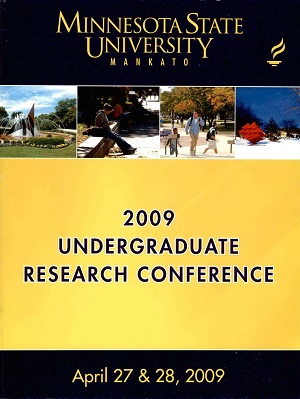Effects of pH on Lead Shot Solubility in Water and Sediment in Upstream and Downstream Locations from a Hunting Preserve in Minnesota
Location
CSU Ballroom
Start Date
28-4-2009 10:00 AM
End Date
28-4-2009 12:00 PM
Student's Major
Biological Sciences
Student's College
Science, Engineering and Technology
Mentor's Name
Beth Proctor
Mentor's Department
Biological Sciences
Mentor's College
Science, Engineering and Technology
Description
The state of Minnesota banned the use of lead shot for migratory bird hunting in 1987 due to its harmful effects on the environment. There are over 53 sporting clay ranges in Minnesota and over 534 in the United States alone. A particular hunting preserve still commonly uses lead shot over and near navigable water sources for clay pigeon shooting and has been in operation since 1975. It is the 30^ largest hunting preserve in the U.S. in regards to number of targets thrown and is 1^^ in the state of Minnesota. Some years they throw as many as 215,000 targets which can result in up to 6.5 tons of lead being released. For this experiment we examined the effects pH had on mobilization of lead from lead shot in water and sediment. Water and sediment samples were collected upstream and downstream fi-om this hunting preserve. We manipulated the soil and water pH levels at 4.5, 6.0, and 8.0. We then placed virgin lead shot in the samples and tested the levels of Pb+ in the samples at 2 and 4 week intervals. We will present our results and discuss environmental significance.
Effects of pH on Lead Shot Solubility in Water and Sediment in Upstream and Downstream Locations from a Hunting Preserve in Minnesota
CSU Ballroom
The state of Minnesota banned the use of lead shot for migratory bird hunting in 1987 due to its harmful effects on the environment. There are over 53 sporting clay ranges in Minnesota and over 534 in the United States alone. A particular hunting preserve still commonly uses lead shot over and near navigable water sources for clay pigeon shooting and has been in operation since 1975. It is the 30^ largest hunting preserve in the U.S. in regards to number of targets thrown and is 1^^ in the state of Minnesota. Some years they throw as many as 215,000 targets which can result in up to 6.5 tons of lead being released. For this experiment we examined the effects pH had on mobilization of lead from lead shot in water and sediment. Water and sediment samples were collected upstream and downstream fi-om this hunting preserve. We manipulated the soil and water pH levels at 4.5, 6.0, and 8.0. We then placed virgin lead shot in the samples and tested the levels of Pb+ in the samples at 2 and 4 week intervals. We will present our results and discuss environmental significance.
Recommended Citation
DeMars, Michael; Cory Denzer; Roland Pavek; and Alison Vikla. "Effects of pH on Lead Shot Solubility in Water and Sediment in Upstream and Downstream Locations from a Hunting Preserve in Minnesota." Undergraduate Research Symposium, Mankato, MN, April 28, 2009.
https://cornerstone.lib.mnsu.edu/urs/2009/poster-session-C/12




